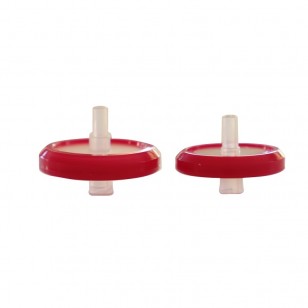Are you confused about how to choose needles and syringes? There are various needles and syringes available at different labs, but it is necessary to understand the proper use of it. And what precautions we should use along with disposal its disposal. When doctors prescribe drugs that need to be self-administer at home can have several reasons. When an individual start taking injections themself, they need to keep the following things in mind- the correct technique to administer the injection, the correct syringe size, and the right needle. In this post, we will see the use of syringe filters and needles with Simsii.
Types of Syringe Options
Disposable
Polyethylene syringes, along with all examples
Rubber-tipped plunger and polyethylene
- The sample may be contaminated as it is pre-lubricated with silicone oil.
- For aqueous solutions, it is satisfactory.
- Reliable seal
- Useful for medical practices
- When using organic solvents, usually the oil dissolves and the rubber swells, causing the plunger to jam.

Types of Polyethylene
- Suitable for practically all chemicals.
- Lubricant-free; does not contaminate samples.
- For organic solvents, recommended.
- Possibility of swelling when exposed to some solvents, such as hexanes
Reusable
Glass Syringes
There are two types of glass barrels, the first having an accurate ground bore and the second having a similar precise ground plunger made of glass or stainless steel, which may be either non-compliant or compliant. In between the barrel and the plunger, there is no seal. However, the escape of liquid or gas can be possible with the barrel and plunger fitting. There is a need for a barrel with a polished interior and a plunger in the second type of glass syringe fitted tightly under its elasticity on a compliant head.
Liquid Tight Glass Plunger And Stainless Steel
- Glass plungers and stainless steel are ideal for aqueous or organic samples that do not crystalize, precipitate, or react with glass.
- A highly basic solution, such as NaOH, should NOT be used.
- Avoid base baths while cleaning.
- Avoid using liquids for stainless steel plungers because they corrode stainless steel (e.g. HCl, Bromine solution).
- Do not use viscous liquids because they can cause unusual stiff plunger movement.
- Very prone to dried deposits jamming it; requires careful cleaning.
- It is crucial that syringes and plungers are accurately ground to fit each other.
The following reasons should always be kept in mind when using these types of syringes with pyrophoric liquids;
- From being pulled completely out plunger has no restraint or detent to prevent it.
- Between the plunger and the barrel, capillary action can pull the liquid.
- A syringe can be jammed with the use of most pyrophoric liquids because it generates deposits.
- Liquid and gas-tight PTFE plunger
- With a PTFE piston that fights hard at the end, a metal or glass plunger.
- Most fluids are compatible.
- The replacement and exchange of plungers are possible.
- The possibility of immensely stiff plunger action, especially at extensive quantities (10 ml), is a drawback.

How To Select an Appropriate Needle?
Hypodermic
Length
- Ensure that the needle is long enough to reach the liquid comfortably. If the needle is too short, the vessel may tip awkwardly, causing the liquid to spill.
- The needle should be thin and long;
- Form excessive resistance to liquid flow, especially for viscous liquids.
- When withdrawing liquid, it increases the chance of accidentally pulling the plunger out of the barrel.
- May come off as a result of excessive pressure or result in a leak between the barrel and the plunger.
- It can be awkward to use an unnecessarily long needle due to being thin, it will look strange.
Safer Needle Devices
Using blunt-ended needles can increase needle safety and avoid needlestick injuries. Blunt-ended needles are helpful for various tasks, such as measuring liquid, moving liquid between vessels, and applying adhesives. However, they are not appropriate for injecting liquid through rubber septa. As engineering safety devices, varieties of safety needles are offered to lower the danger of needlestick injuries. Each operates on the premise that after the syringe and needle have been used, the sharp point is either covered or the needle retracts into the syringe. In medical facilities or when working with animals, safety needles are convenient.
Final Words
In this post, you can see everything, the selection of a needle, its use, and how to dispose of it. If you are going to use syringe filters for individual use, having this type of information is necessary. If you want to purchase a PTFE Syringe filter for a particular user, you can approach Simsii.






